Abstract
The contribution of the response-reinforcer dependency to the control of behavior was investigated. Pigeons were trained to key peck under a variable-interval schedule of reinforcement. With the total number and temporal distribution of reinforcer deliveries in experimental sessions constant, the effects of varying the percentage of response-independent reinforcement were examined. At different times, 100%, 66%, 33%, 10%, or 0% of the scheduled reinforcers were delivered dependent upon key pecking and the remainder were delivered independently of responding. Response rates were related to the percentage of response-dependent reinforcement with lower response rates associated with smaller percentages of response-dependent reinforcement. The results suggest that the response-reinforcer relation exerts control over behavior in a manner similar to that exerted by other parameters of reinforcement.
Full text
PDF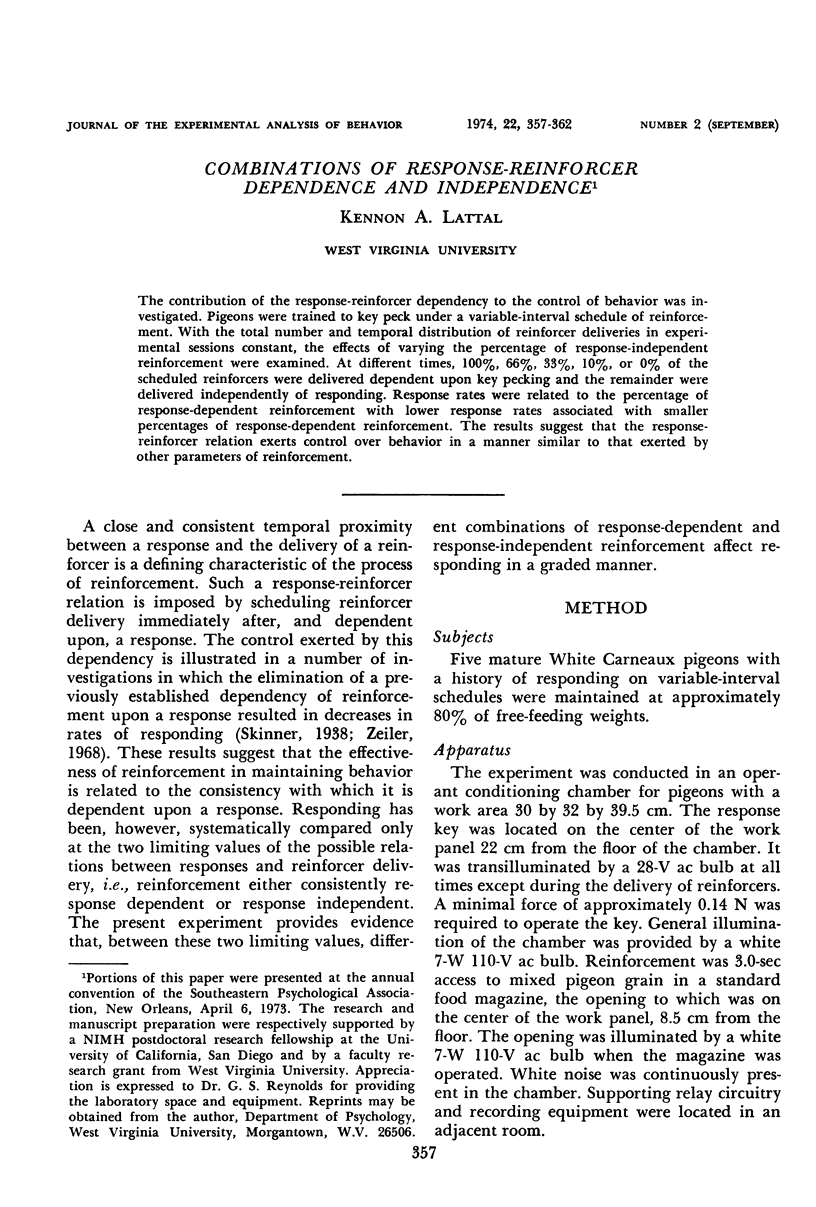
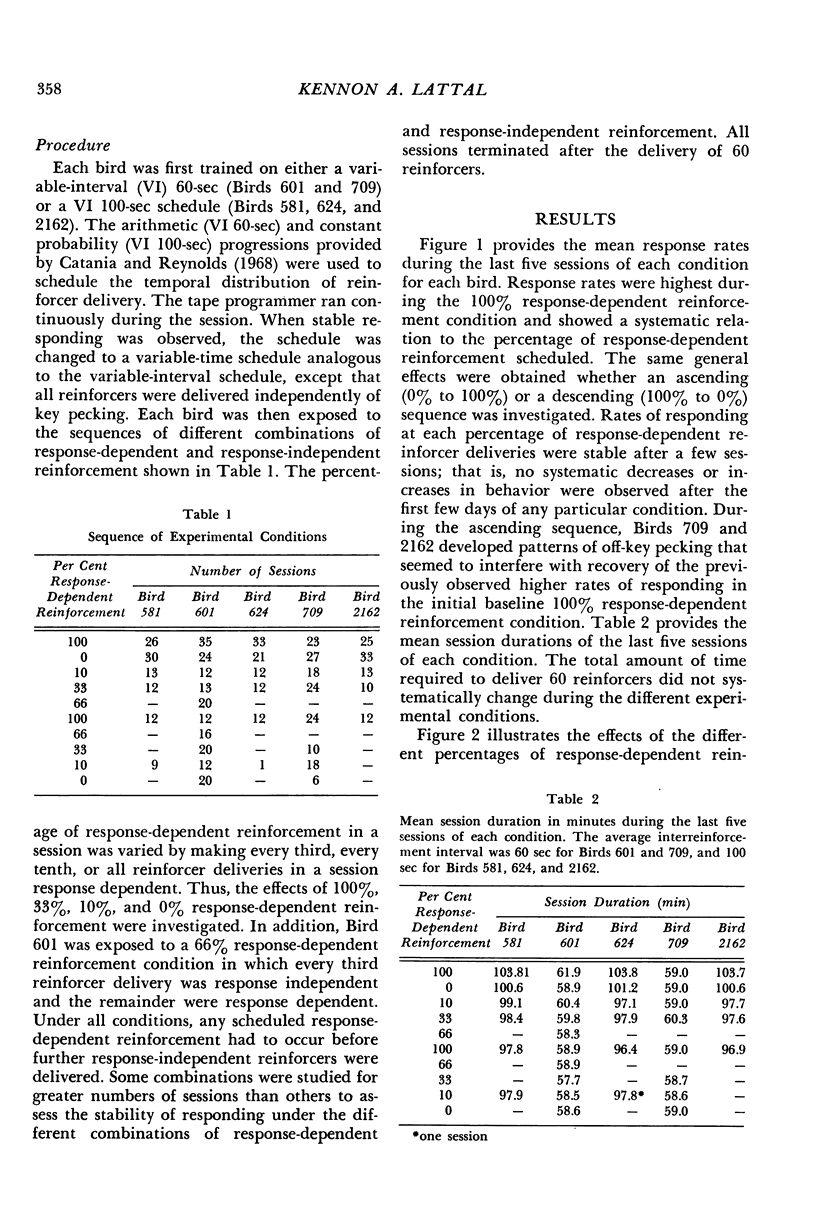
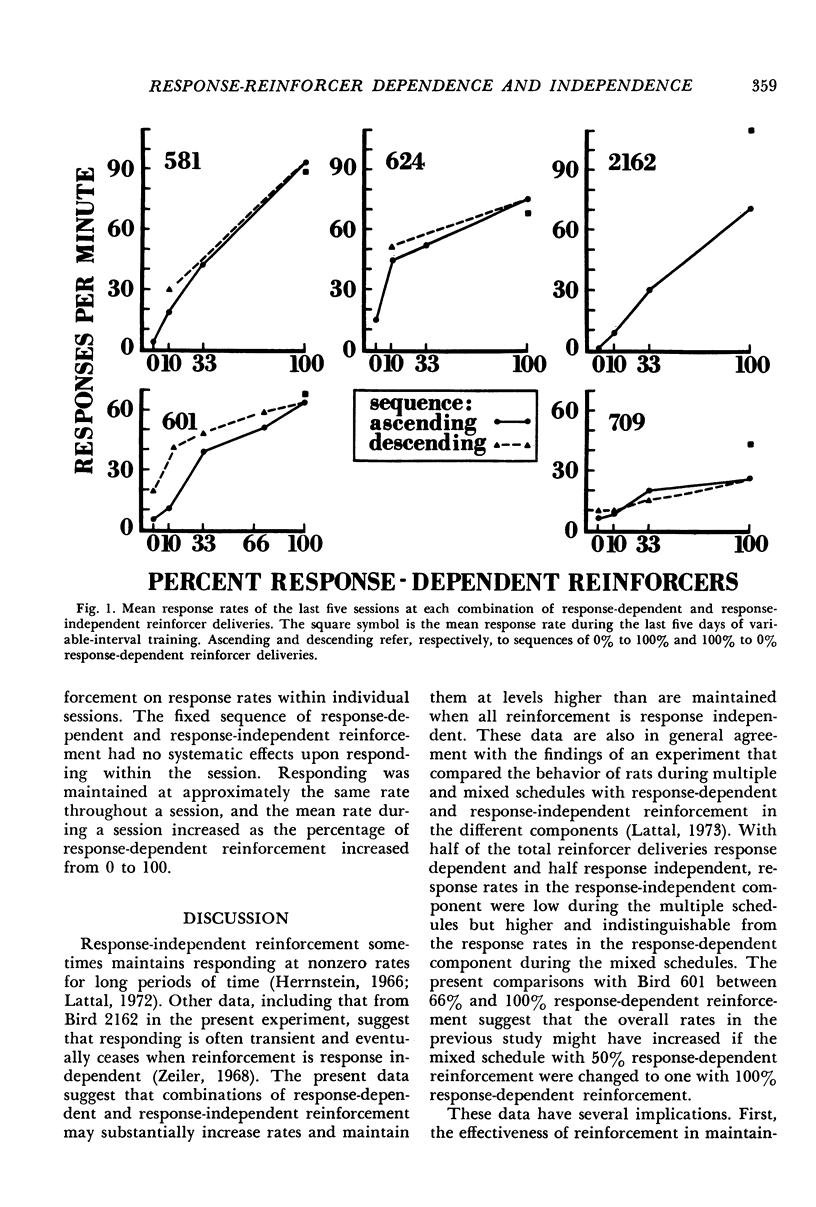

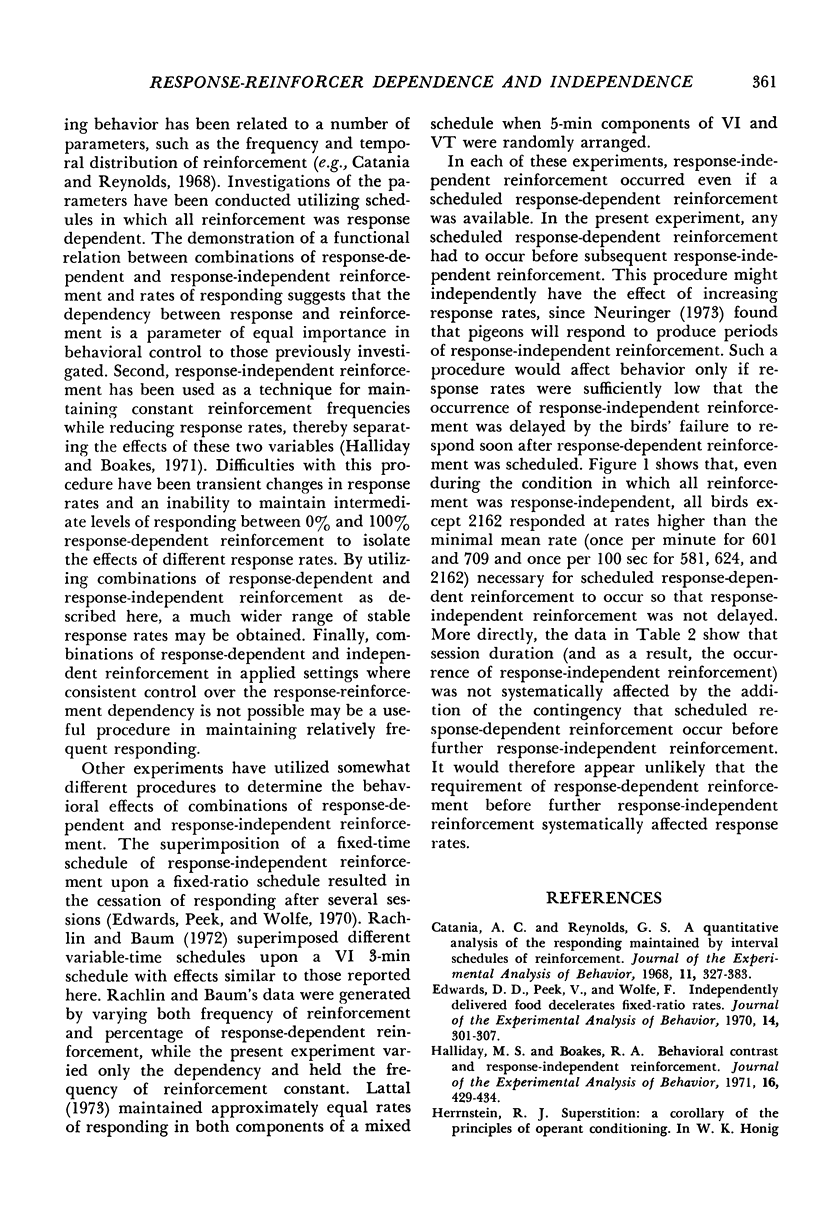
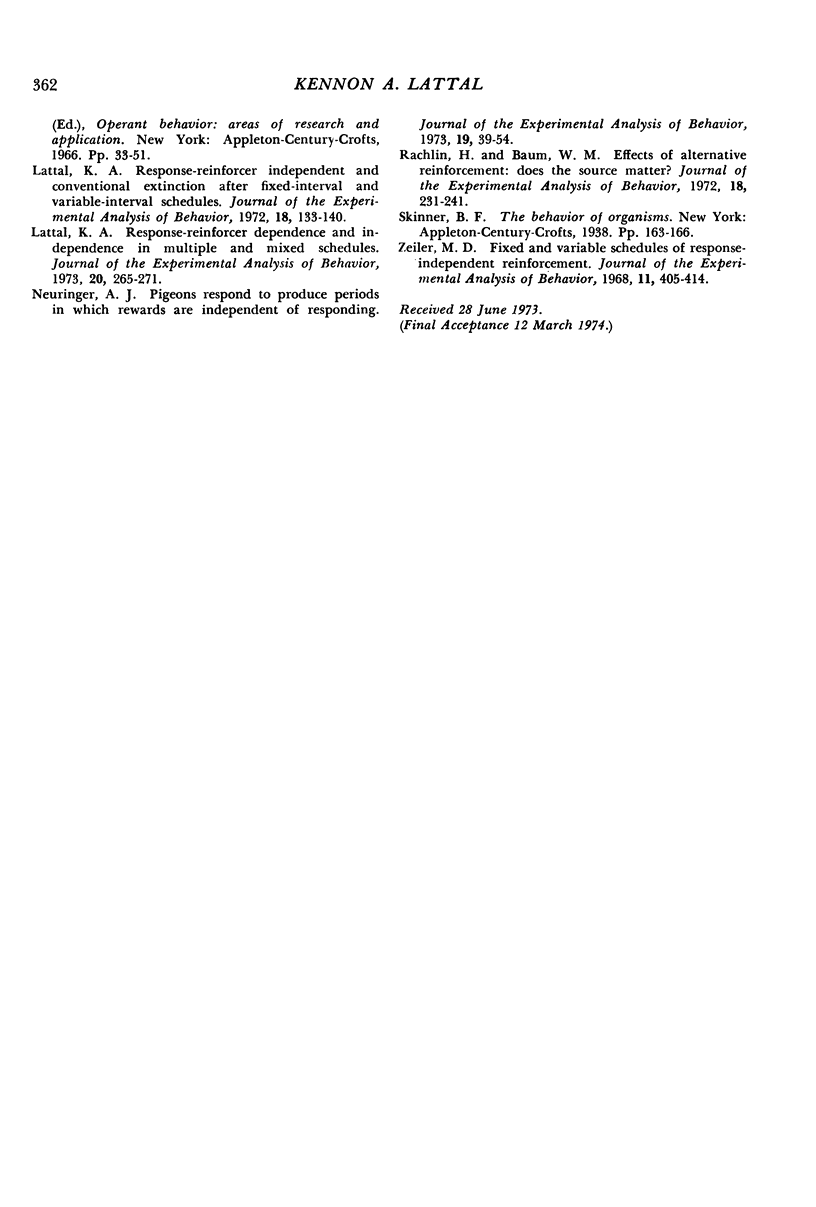
Selected References
These references are in PubMed. This may not be the complete list of references from this article.
- Catania A. C., Reynolds G. S. A quantitative analysis of the responding maintained by interval schedules of reinforcement. J Exp Anal Behav. 1968 May;11(3 Suppl):327–383. doi: 10.1901/jeab.1968.11-s327. [DOI] [PMC free article] [PubMed] [Google Scholar]
- Edwards D. D., Peek V., Wolfe F. Independently delivered food decelerates fixed-ratio rates. J Exp Anal Behav. 1970 Nov;14(3):301–307. doi: 10.1901/jeab.1970.14-301. [DOI] [PMC free article] [PubMed] [Google Scholar]
- Halliday M. S., Boakes R. A. Behavioral contrast and response independent reinforcement. J Exp Anal Behav. 1971 Nov;16(3):429–434. doi: 10.1901/jeab.1971.16-429. [DOI] [PMC free article] [PubMed] [Google Scholar]
- Lattal K. A. Reponse-reinforcer independence and conventional extinction after fixed-interval and variable-interval schedules. J Exp Anal Behav. 1972 Jul;18(1):133–140. doi: 10.1901/jeab.1972.18-133. [DOI] [PMC free article] [PubMed] [Google Scholar]
- Lattal K. A. Response-reinforcer dependence and independence in multiple and mixed schedules. J Exp Anal Behav. 1973 Sep;20(2):265–271. doi: 10.1901/jeab.1973.20-265. [DOI] [PMC free article] [PubMed] [Google Scholar]
- Neuringer A. Pigeons respond to produce periods in which rewards are independent of responding. J Exp Anal Behav. 1973 Jan;19(1):39–54. doi: 10.1901/jeab.1973.19-39. [DOI] [PMC free article] [PubMed] [Google Scholar]
- Rachlin H., Baum W. M. Effects of alternative reinforcement: does the source matter? J Exp Anal Behav. 1972 Sep;18(2):231–241. doi: 10.1901/jeab.1972.18-231. [DOI] [PMC free article] [PubMed] [Google Scholar]
- Zeiler M. D. Fixed and variable schedules of response-independent reinforcement. J Exp Anal Behav. 1968 Jul;11(4):405–414. doi: 10.1901/jeab.1968.11-405. [DOI] [PMC free article] [PubMed] [Google Scholar]


